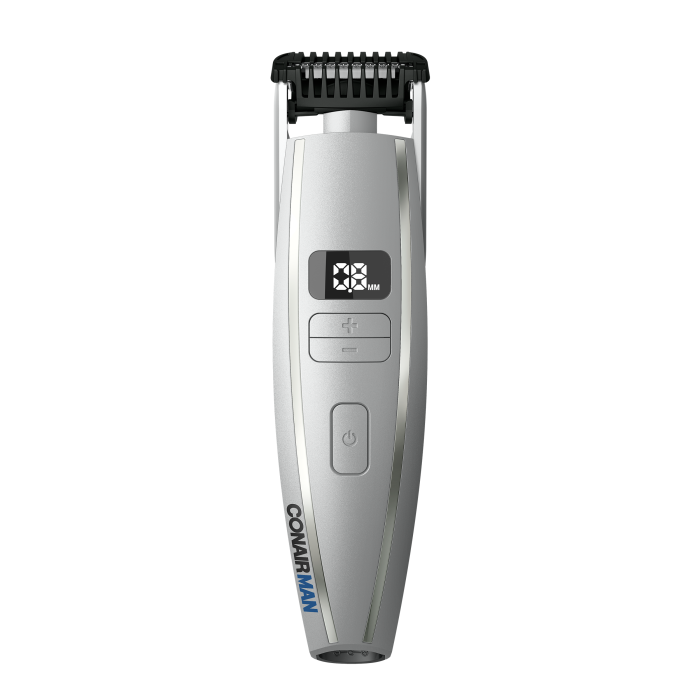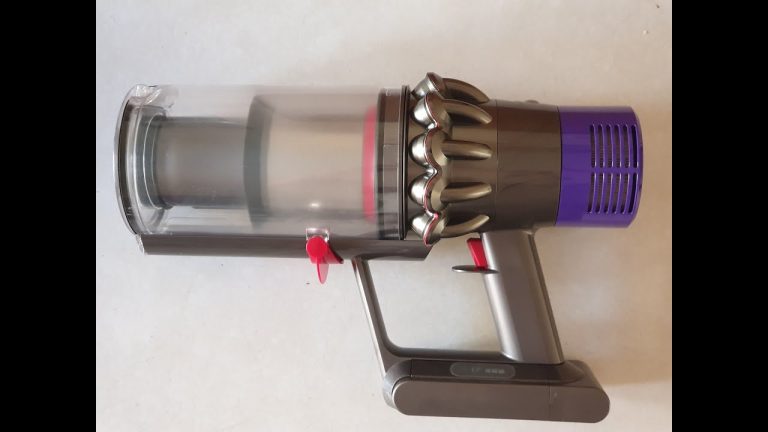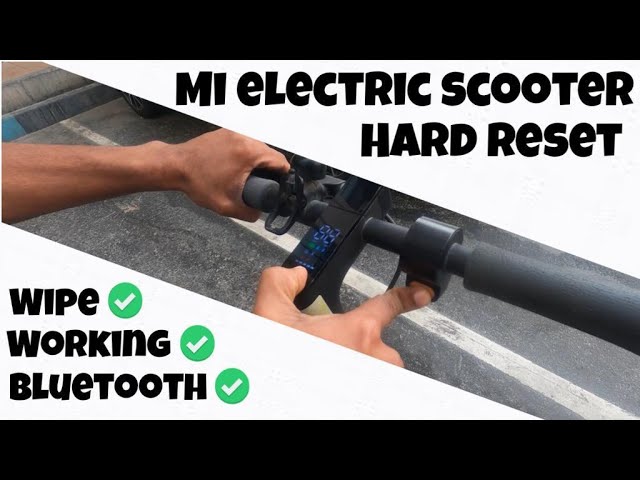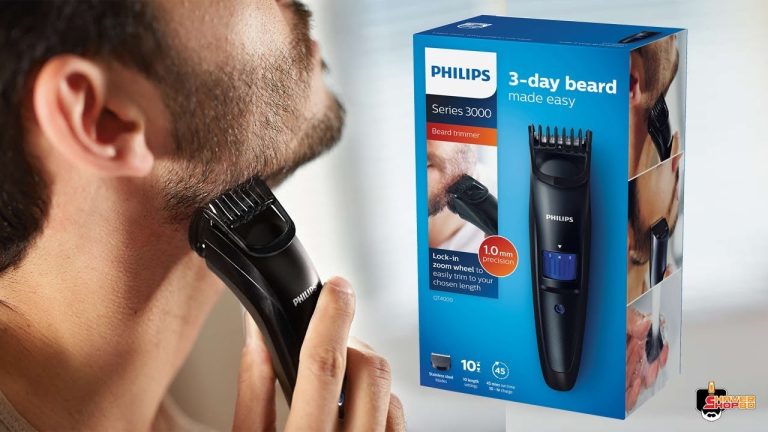How to Use a Beard Trimmer Properly?
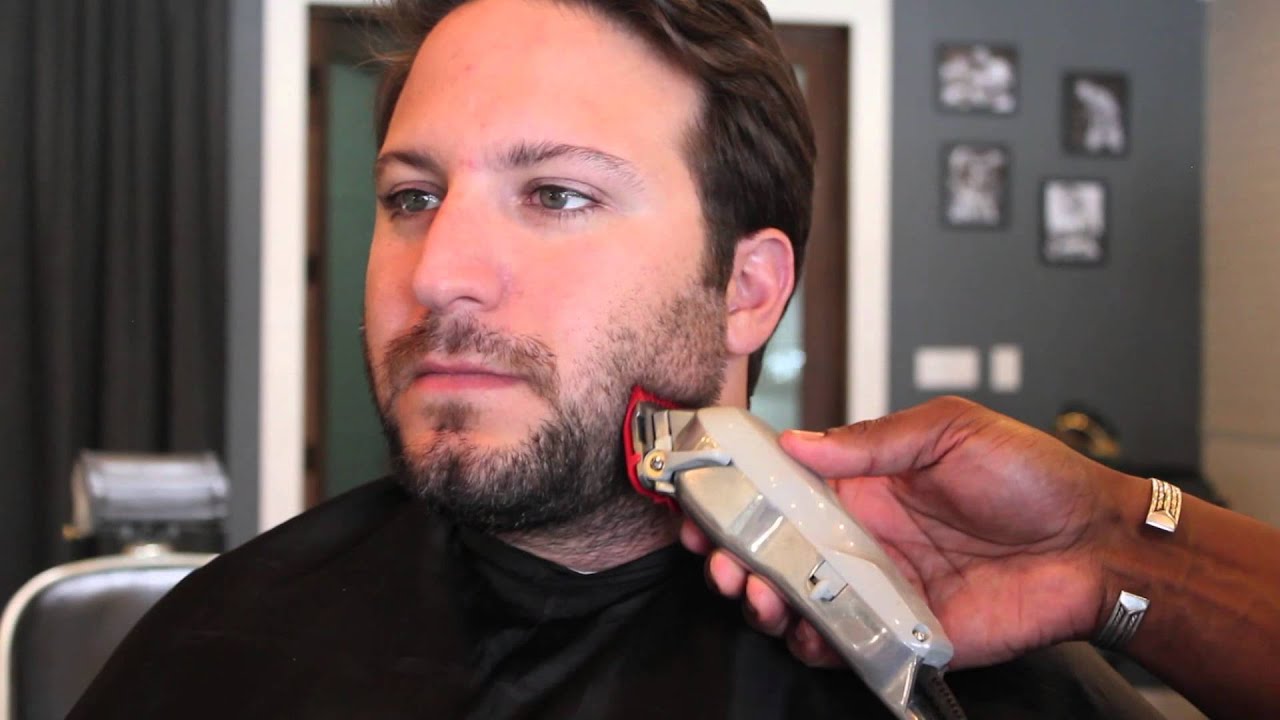
To use a beard trimmer properly, adjust the trimmer length, trim in the direction of hair growth, and clean and maintain the trimmer regularly. Now, let’s delve into the proper usage of a beard trimmer and the essential steps to achieve a well-groomed beard.
Whether you’re a seasoned beardsman or new to the bearded game, using a beard trimmer correctly is crucial for achieving your desired style. A beard trimmer is a versatile tool designed to maintain, shape, and groom facial hair. By following a few simple steps, you can ensure a precise and even trim that enhances your facial hair’s appearance while keeping it well-maintained.
We’ll discuss the different types of beard trimmers and provide detailed instructions on how to use one effectively.
Understanding The Basics Of Beard Trimmers
A well-groomed beard can instantly add a touch of sophistication and style to any man’s look. To achieve and maintain a perfectly trimmed beard, having the right tool is essential. Enter the beard trimmer – a versatile device specially designed to keep your facial hair in check. In this guide, we will explore the basics of beard trimmers, including the different types available, key features to look for, and how to choose the right one for your needs.
Different types of beard trimmers available in the market
Beard trimmers come in various shapes and sizes, each offering unique features to suit different needs. Understanding the different types available will help you make an informed decision when purchasing one. Here are some common types of beard trimmers:
| Type | Description |
|---|---|
| Corded Beard Trimmers | These trimmers need to be plugged into a power source during use. They provide a consistent power supply and are suitable for those who have access to a power outlet while grooming. |
| Cordless Beard Trimmers | These trimmers operate using a rechargeable battery and offer flexibility and convenience. They can be used anywhere without being limited by the length of a cord. |
| Multifunctional Beard Trimmers | These trimmers offer more than just beard trimming capabilities. They often come with attachments for grooming other facial hair, such as mustaches or sideburns. |
Key features to look for in a beard trimmer
When selecting a beard trimmer, certain features can make a significant difference in usability and performance. Here are some key features to look for:
- Adjustable Length Settings: Look for a trimmer with adjustable length settings to achieve your desired beard length. Many trimmers offer different length options through detachable combs or adjustable blades.
- Battery Life: For cordless trimmers, battery life is crucial. A long-lasting battery will ensure that your trimmer doesn’t run out of power midway through grooming.
- Easy Cleaning: Trimmers with detachable blades or washable components make cleaning a breeze, ensuring hygiene and longevity.
- Ergonomic Design: A trimmer with a comfortable grip and easy maneuverability will make the trimming process more effortless and enjoyable.
- Accessories and Attachments: Some trimmers come with additional accessories like trimming guides, cleaning brushes, or storage cases, adding value to your purchase.
How to choose the right beard trimmer for your needs
Choosing the right beard trimmer depends on individual preferences, expectations, and grooming requirements. Here’s a step-by-step guide to help you make an informed decision:
- Assess Your Grooming Needs: Consider the length and style you want to achieve, whether you need additional grooming capabilities, and your budget.
- Research and Compare: Read reviews, compare prices, and evaluate the features offered by different trimmers. Look for reputable brands known for their quality and reliability.
- Consider Battery Life and Charging Time: If you opt for a cordless trimmer, ensure its battery life aligns with your grooming routine and that the charging time is reasonable.
- Evaluate Durability: Look for trimmers made with high-quality materials that will withstand regular use and last for a long time.
- Check Warranty and Customer Support: A reliable warranty and accessible customer support can provide peace of mind and assistance in case of any issues.
By following these steps and considering the factors mentioned above, you can select a beard trimmer that meets your needs perfectly.
Now that you have a good understanding of the basics of beard trimmers, you’re ready to embark on your grooming journey with confidence. Remember to make an informed choice, prioritize the features that matter to you, and enjoy the benefits of a well-maintained beard!
Preparing Your Beard And Trimmer
To achieve the perfect beard trim, it’s crucial to properly prepare both your beard and trimmer. By taking the time to prepare, you can ensure a hassle-free experience and achieve the desired results. This section will guide you through the steps required to prepare your beard and trimmer before starting the trimming process.
Washing and Drying Your Beard Before Trimming
Prior to trimming, it’s important to wash your beard thoroughly to remove any dirt, oil, or product buildup. Use a mild shampoo specifically designed for facial hair, and gently massage it into your beard, making sure to reach the skin underneath. Rinse thoroughly to eliminate all traces of shampoo.
After washing, it’s crucial to dry your beard properly. Using a clean towel, gently pat your beard dry, being careful not to rub it vigorously as this can cause frizz and damage. Allow your beard to air dry for a few minutes to ensure it’s completely dry before trimming.
Trimming Tools and Accessories Needed for a Hassle-Free Experience
To ensure a hassle-free trimming experience, it’s essential to gather all the necessary tools and accessories. Here are the items you’ll need:
| Trimming Tools | Accessories |
|---|---|
|
|
Having all these tools at hand will provide you with a hassle-free experience, allowing you to trim your beard precisely and comfortably.
Trimmer Maintenance and Cleaning Tips for Optimal Performance
To ensure the optimal performance of your beard trimmer, regular maintenance and cleaning are essential. Follow these tips to keep your trimmer in excellent condition:
- Regularly oil your trimmer’s blades to prevent rust and ensure smooth operation. Refer to the manufacturer’s instructions for the recommended oil and application.
- Remove and clean the cutting attachments after each use. Use a small brush or toothbrush to remove any hair or debris that may have accumulated.
- Wipe the trimmer’s body with a clean cloth to remove any hair or product residue. Avoid using water or any liquid on the device.
- Store the trimmer in a dry and safe place, away from moisture and extreme temperatures.
By following these simple maintenance and cleaning tips, you can extend the lifespan of your beard trimmer and ensure it continues to deliver top-notch performance for years to come.
Step-By-Step Guide To Using A Beard Trimmer
Welcome to our step-by-step guide on how to use a beard trimmer properly. A well-groomed beard can enhance your overall appearance and boost your confidence. By following these simple steps, you can achieve a neat and stylish beard that suits your preferences. In this guide, we will focus on the key areas of using a beard trimmer, including setting the desired length, trimming the sideburns and neckline, as well as working on the mustache, chin, and cheek areas. Let’s get started!
Setting the Desired Length and Adjusting the Trimmer
Before you begin trimming your beard, it’s important to set the desired length and adjust your trimmer accordingly. Depending on the trimmer model you have, you can usually select from different length settings using a built-in dial or comb attachments. Here’s how you can do it:
- First, make sure your trimmer is fully charged or connected to a power source.
- Next, decide on the length you want for your beard. If you’re unsure, start with a longer setting and gradually decrease it until you achieve the desired length.
- Once you’ve determined the length, adjust the trimmer by either turning the dial to the corresponding setting or attaching the appropriate comb to the trimmer head.
- Make sure the trimmer blades are clean and well-maintained to ensure a smooth and effective trimming experience.
By setting the desired length and adjusting your beard trimmer, you are ready to move on to the next step of the trimming process.
Trimming the Sideburns and Neckline for a Polished Look
The sideburns and neckline play a crucial role in shaping your beard and creating a polished look. Here’s how you can do it:
- Begin by combing your sideburns downward to ensure they lay flat against your face.
- Position the trimmer at the desired length setting and gently trim the sideburns, following their natural shape. Be sure to avoid going too high or too low, as this can result in an uneven appearance.
- Move on to the neckline by combing the hair in that area downwards as well. Use the trimmer to create a clean and defined neckline by carefully removing any excess hair below it.
- For a more polished look, consider using a precision trimmer to tidy up any stray or unruly hairs around the sideburns and neckline.
By trimming the sideburns and neckline properly, you can achieve a well-defined and professional-looking beard.
Working on the Mustache, Chin, and Cheek Areas for a Well-Groomed Beard
The mustache, chin, and cheek areas require special attention to ensure a well-groomed and cohesive beard. Follow these steps to enhance these areas:
- Start by combing your mustache downwards to remove any tangles or knots.
- Using the trimmer, carefully trim the mustache to the desired length, making sure to maintain symmetry and shape.
- Moving on to the chin area, use the trimmer to define the shape of your beard. Whether you prefer a rounded or square chin, trim the hair accordingly and blend it seamlessly into the jawline.
- Lastly, work on the cheek areas by removing any stray or overgrown hairs that may disrupt the overall appearance of your beard.
By focusing on the mustache, chin, and cheek areas, you can achieve a well-groomed beard that complements your facial features.
Congratulations! You’ve successfully learned how to use a beard trimmer properly. By following this step-by-step guide, you can maintain a neatly trimmed beard that suits your style preferences. Remember to set the desired length, adjust the trimmer, trim the sideburns and neckline, and work on the mustache, chin, and cheek areas. With practice, you’ll become more proficient in maintaining your beard and achieving the desired look. Take pride in your well-groomed beard and rock it confidently!
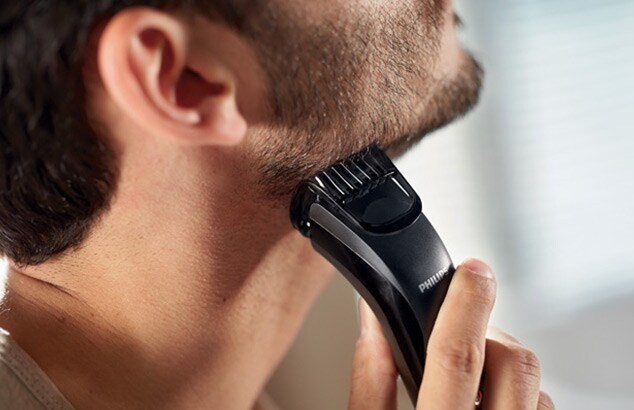
Credit: www.usa.philips.com
Expert Tips For Achieving The Perfect Trim
Properly using a beard trimmer can make all the difference in creating a well-groomed and stylish beard. Whether you’re aiming for a rugged stubble or a full, refined beard, these expert tips will help you achieve the perfect trim. By understanding the different beard styles, dealing with common trimming challenges, and using additional grooming techniques, you’ll be on your way to a beard that turns heads.
Understanding the different beard styles and how to achieve them
To achieve your desired beard style, it’s crucial to understand the different options available and how to execute them flawlessly. Here are some popular beard styles and the steps to achieve them:
| Beard Style | Steps to Achieve |
|---|---|
| Stubble |
|
| Short Boxed Beard |
|
| Full Beard |
|
Dealing with common trimming challenges such as patchy growth or uneven length
Trimming challenges are common when it comes to maintaining a beard. Fortunately, there are techniques you can use to address these issues:
- If you have patchy growth, consider trimming your beard shorter to create a more consistent appearance.
- To combat uneven length, trim your beard in the direction of hair growth using small and precise movements.
- Regularly exfoliate your skin to promote healthy hair growth and reduce the chances of patchiness.
Using additional grooming techniques to enhance your beard’s appearance
Achieving the perfect trim goes beyond just using a beard trimmer. Additional grooming techniques can help enhance your beard’s appearance and overall look:
- Brush your beard daily to distribute natural oils and prevent tangling.
- Apply beard oil or balm to moisturize your facial hair and promote healthy growth.
- Consider using a beard comb to detangle and style your beard.
- Trim your mustache separately to maintain its distinct shape.
By combining these expert tips with proper beard trimmer usage, you’ll be well on your way to achieving the perfect trim and rocking a beard that suits your style.
Troubleshooting And Maintenance
When it comes to keeping your beard neatly trimmed, a beard trimmer is an essential tool in every man’s grooming routine. However, like any other device, beard trimmers can sometimes encounter issues or need maintenance to ensure they function optimally. In this section, we will discuss common issues you may face with your beard trimmer and how to fix them, as well as tips on maintaining the sharpness and longevity of your trimmer’s blades, and storing and organizing your beard trimmer and accessories efficiently.
Common issues with beard trimmers and how to fix them
If you find that your beard trimmer is not working as expected, don’t worry! Many common issues have simple solutions. Here are a few troubleshooting tips to help you fix the most encountered problems:
- Blade not moving:
- Check if the trimmer is properly charged or if the battery needs to be replaced.
- Ensure the blade is not clogged with hair or debris. Clean it thoroughly and apply a few drops of lubricating oil.
- If these steps don’t help, it might be necessary to replace the blade or contact the manufacturer for further assistance.
- Uneven cutting:
- Make sure the comb attachment is securely locked in place and not loose.
- Ensure that the blades are sharp and not dull. If they are dull, consider replacing them.
- Hold the trimmer at the correct angle and move it slowly and steadily to achieve a more consistent cut.
- Trimmer not turning on:
- Check the power source or the battery level of your trimmer.
- If using a corded trimmer, make sure the power cord is connected properly to an outlet.
- If it is a rechargeable trimmer, try charging it using a different power source or cable.
- If the issue persists, contact the manufacturer for assistance.
Maintaining the sharpness and longevity of your trimmer’s blades
To keep your beard trimmer performing at its best and ensure the blades last longer, follow these maintenance tips:
- Regularly clean your trimmer after each use. Remove any hair or debris that might accumulate in the blades or comb attachment.
- Apply a few drops of lubricating oil to the blades to reduce friction and keep them sharp.
- Check the blades for any signs of wear or damage. If they appear dull or broken, replace them promptly to avoid uneven cutting or skin irritation.
- Store your trimmer in a clean and dry place to prevent moisture or rust from affecting the blades.
Storing and organizing your beard trimmer and accessories efficiently
Proper storage and organization of your beard trimmer and accessories not only keep them in good condition but also saves you time when you need to use them. Here are some tips to organize your grooming tools:
- Designate a specific storage area for your trimmer and accessories. This can be a drawer, a shelf, or a grooming toolbox.
- Consider using a case or a pouch to protect your trimmer and keep it dust-free when not in use.
- Keep the charging cable and any spare parts in a separate compartment or container.
- If you have multiple attachments, use zip-lock bags or small containers to keep them organized and prevent them from getting lost.
- Regularly clean and sanitize the storage area to maintain a hygienic environment for your grooming tools.
By following these troubleshooting and maintenance tips, you can ensure that your beard trimmer remains in excellent condition, providing you with the precision and control you need to maintain a well-groomed beard.
Best Practices For Beard Trimming
Avoiding Common Mistakes That Can Result in an Uneven or Messy Beard
Trimming your beard is an essential part of maintaining a well-groomed and polished look. However, many men make some common mistakes that can lead to an uneven or messy beard. By avoiding these mistakes, you can ensure that your beard trim is precise and professional.
- Always start with dry hair: Trimming your beard when it’s damp can cause your hair to appear longer than it actually is. By starting with dry hair, you can get a more accurate trim.
- Regularly clean your trimmer: A dirty trimmer can lead to uneven cuts and can even cause skin irritation. Make sure to clean the blades and remove any hair buildup before each use.
- Take your time: Rushing through the trimming process can result in a haphazard cut. Take your time and work in small sections to ensure precision.
- Use the right comb attachment: Different comb attachments provide different lengths. Make sure you’re using the right one for the desired length you want.
- Trim in the direction of hair growth: This is important to maintain the natural shape of your beard and to prevent the hair from looking unkempt.
Incorporating a Beard Trimmer into Your Regular Grooming Routine
Integrating a beard trimmer into your regular grooming routine is an excellent way to keep your beard looking sharp and well-maintained. Here are some useful tips to help you incorporate a beard trimmer:
- Choose the right trimmer: There are various options available on the market, so choose one that suits your needs, whether it’s cordless, with multiple comb attachments, or adjustable blade lengths.
- Find a comfortable spot with good lighting: Ensure that you have sufficient lighting to see your beard clearly and find a comfortable place where you can concentrate on your grooming routine.
- Prep your beard: Comb your beard thoroughly to remove any tangles or knots. This will ensure that the trimmer glides smoothly through your hair, providing an even trim.
- Have a clear vision: Before starting, imagine the desired style you want to achieve. This will help you visualize your beard’s shape and guide your trimming process.
- Follow the contours of your face: Move the trimmer along the natural lines of your face to maintain a harmonious and balanced look.
Understanding When and How Often to Trim Your Beard for Optimal Results
Knowing when and how often to trim your beard is crucial for achieving optimal results. Here’s a guide to help you:
| Beard Length | Trimming Frequency |
|---|---|
| Short/Medium | Every 1-2 weeks |
| Long/Thick | Every 2-4 weeks |
Trimming more frequently is recommended for shorter beards to maintain a neat appearance, while longer beards may require less frequent trims to preserve their length. Additionally, keep an eye out for split ends or damaged hair, as this may require more frequent trims to prevent further damage.
By following these best practices, you can ensure that your beard trim using a beard trimmer is precise, efficient, and enhances your overall appearance. Incorporate these tips into your regular grooming routine to maintain a stylish and well-groomed beard effortlessly.
Frequently Asked Questions Of How To Use A Beard Trimmer Properly
How Do You Use A Beard Trimmer Effectively?
To use a beard trimmer effectively, follow these steps:
1. Start with clean, dry hair to avoid clogging the trimmer.
2. Set the trimmer to your desired length.
3. Trim in the direction of hair growth for a neater result.
4. Use steady, gentle strokes to avoid pulling or tugging.
5. Regularly clean and maintain the trimmer for optimal performance.
Do You Trim Up Or Down With A Beard Trimmer?
You trim up with a beard trimmer to shape and maintain a neat appearance.
How Do You Trim A Beard With A Trimmer For Beginners?
To trim a beard with a trimmer as a beginner, follow these steps:
1. Start with a clean, dry beard.
2. Comb your beard in the direction of hair growth.
3. Set your trimmer to the desired length.
4. Trim your beard gradually, moving against the hair growth.
5. Shape your beard with precision by trimming around the edges.
Where Should Your Beard Neckline Be?
The beard neckline should be located above the Adam’s apple, about two finger-widths above it. This helps define the jawline and create a clean, neat appearance.
Conclusion
To sum up, knowing how to use a beard trimmer properly is essential for maintaining a well-groomed appearance. By following the steps outlined in this guide, you can achieve precise and even results every time. Remember to choose the right length setting, trim in the direction of hair growth, and clean your trimmer regularly for optimal performance.
With practice and diligence, you’ll master the art of beard trimming in no time. So go ahead, rock that perfect beard with confidence.

